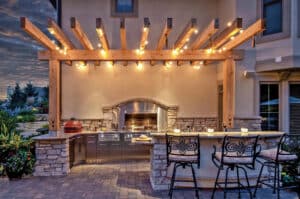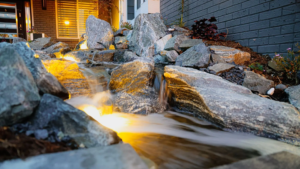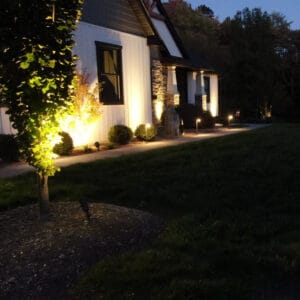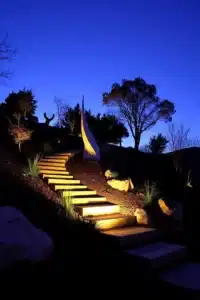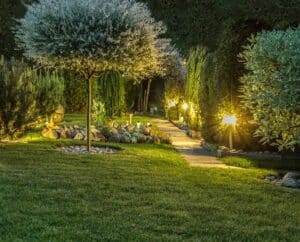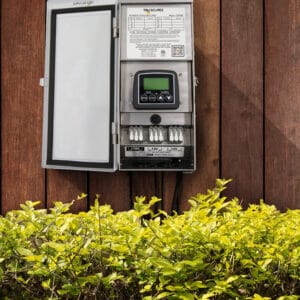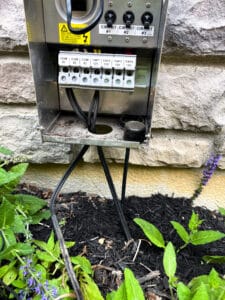Ever notice how a thoughtfully lit home seems to have a special glow, an inviting warmth that stands out on the block? That captivating effect isn’t an accident. It’s the result of a well-planned approach to lighting, a design element that does more than just illuminate your property—it completely transforms it.
Many homeowners invest in beautiful gardens and pristine lawns, only to have their hard work disappear as soon as the sun goes down. The right lighting can extend the enjoyment of your outdoor spaces long into the evening, highlight your home’s architectural features, and improve safety and security. It’s a key element of professional landscape design.
This guide will walk you through 15 professional landscape lighting ideas to help you see your home in a whole new light. From subtle glows to dramatic highlights, you’ll learn how to create a layered, beautiful, and functional outdoor ambiance.
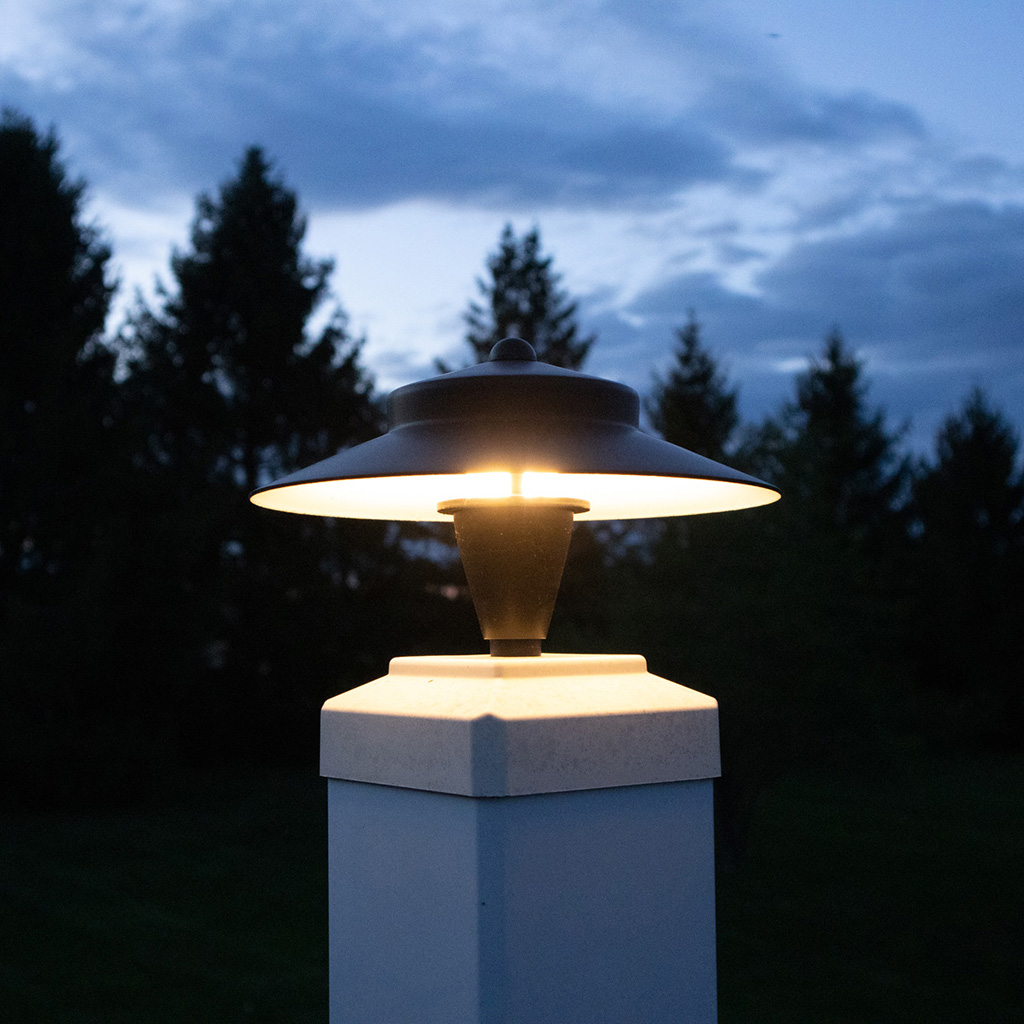
Foundational Techniques: The Building Blocks of Great Lighting
Before we jump into specific applications, let’s cover the essential techniques that lighting designers use. Understanding these core concepts will help you mix and match ideas to create a cohesive and stunning design.
1. Uplighting: Creating Drama and Highlighting Key Features
Uplighting is a classic technique where you place a light fixture at the base of an object and aim it upward. This creates a dramatic, eye-catching effect that is perfect for highlighting the textured bark of a mature tree, an elegant column, or a striking architectural detail on your home’s facade. By casting shadows upward, you create a sense of grandeur and depth that instantly boosts curb appeal.
- Best for: Trees, large shrubs, statues, and architectural columns.
- Pro Tip: The distance of the light from the object determines the width of the beam. Place it closer for a narrow, dramatic effect and further away for a broader, softer wash of light.
2. Downlighting: Mimicking Natural Moonlight
For a softer, more natural look, downlighting is an excellent choice. This involves mounting a fixture high up in a tree or on an architectural feature and directing the light downward. The effect mimics moonlight filtering through branches, casting soft, dappled shadows on your lawn, pathways, and garden beds below. It provides a gentle, ambient light that feels both magical and natural.
- Best for: Patios, garden beds, and illuminating large areas from above.
- Pro Tip: Use a fixture with a glare shield to ensure the light source itself isn’t visible, preserving the natural “moonlight” illusion.
3. Silhouetting: The Art of the Outline
If you have a tree or statue with a unique and recognizable shape, silhouetting can create a powerful visual impact. This technique involves placing a light source behind the object and aiming it toward a wall or other vertical surface. This illuminates the wall, leaving the object in front as a dark, striking silhouette. It’s a sophisticated way to add artistic flair to your landscape while adhering to responsible lighting principles to minimize light pollution.
- Best for: Sculptural plants like Japanese maples, interesting statues, or fountains.
4. Shadowing: Playing with Shapes
Shadowing is the reverse of silhouetting. Here, you place the light between a feature (like a tree) and a viewing area, aiming the light at the object. This casts an intriguing shadow of the object onto a wall or fence behind it. It’s a fantastic way to add visual interest and texture to a plain surface, especially in the evening.
- Best for: Plants with open, lacy foliage or interesting branching structures.
Illuminating Your Pathways and Entrances
Properly lighting walkways is crucial for both aesthetics and safety. It guides guests to your door and prevents trips and falls, all while contributing to the overall design.
5. Path Lighting: Guiding the Way
Path lights are a staple of landscape lighting for good reason. These fixtures are typically placed on short stakes along walkways, driveways, and garden perimeters. They cast pools of light downward and outward, clearly defining the path’s edge. The key is to stagger them on either side of the path rather than placing them in a straight line, which can create a “runway” effect.
- How to do it right: According to expert tips on spacing, you should space lights about 8-10 feet apart, ensuring the pools of light overlap slightly to create a continuous, gentle guide.
6. Step and Stair Lighting: Safety Meets Style
Stairs can be a significant hazard in the dark. Step lights are designed to be integrated directly into the vertical risers or walls of your steps. They cast a low-profile, downward light that illuminates the treads, making navigation safe without creating distracting glare. This is one of the most important landscape lighting ideas for homes with multi-level outdoor spaces.
- Pro Tip: Even a single, well-placed light on a short flight of stairs can make a huge difference in safety and ambiance.
Highlighting Your Home’s Architecture
Your home is the centerpiece of your property. Architectural lighting draws attention to its best features after dark.
7. Wall Washing: Creating an Even Glow
Wall washing involves placing light fixtures a few feet away from a wall and aiming them to create a smooth, even wash of light across the surface. This technique is perfect for highlighting beautiful stone or brick facades, adding a soft ambient light to your home’s exterior, and creating a sense of security. It gives the entire home a warm, welcoming presence.
8. Wall Grazing: Emphasizing Texture
Similar to wall washing, grazing involves placing the light source very close to the wall. This placement causes the light to hit the surface at a sharp angle, dramatically highlighting its texture. Grazing is an excellent choice for surfaces like stacked stone, rough-hewn wood, or textured stucco, as it brings out all the nooks and crannies for a rich, detailed look.
Comparison: Wall Washing vs. Wall Grazing
| Feature | Wall Washing | Wall Grazing |
| Fixture Placement | A few feet from the wall | Very close to the wall (within 12 inches) |
| Primary Goal | Create a smooth, uniform light | Emphasize surface texture |
| Best For | Flat, evenly colored surfaces | Stone, brick, textured siding |
| Effect | Soft, ambient glow | Dramatic shadows and highlights |
Bringing Your Garden and Landscape to Life
Don’t let your beautiful plantings fade into the darkness. Garden lighting extends the beauty of your landscape into the night.
9. Accent Lighting for Garden Beds
Use smaller, focused spotlights to pick out key plants, flowers, or decorative elements within your garden beds. This creates pockets of light and interest, drawing the eye through the landscape. You can highlight a prized rose bush, a colorful cluster of perennials, or a decorative pot.
10. Hardscape Lighting: Illuminating Walls and Benches
Hardscape lighting involves integrating lights directly into retaining walls, seating walls, and built-in benches. These fixtures are typically discreet, linear LEDs that cast a soft glow downward, highlighting the texture of the stone or wood while providing useful ambient light for seating areas. It adds a high-end, custom look to your outdoor living spaces.
11. Pond and Water Feature Lighting
Lighting a water feature can create a truly mesmerizing effect. Placing an underwater light in a pond or fountain illuminates the water from within, highlighting its movement and creating beautiful reflections. You can also use spotlights to highlight a waterfall or the plants surrounding your pond, doubling the visual impact.
Creating Ambiance in Outdoor Living Areas
Make your patios, decks, and pergolas functional and inviting for evening entertaining by following established best practices.
12. Deck Lighting: Subtle and Sophisticated
Similar to step lighting, deck lighting can be installed on stair risers, under railings, or on the posts themselves. Post cap lights provide a soft downlight, while lights mounted under the handrail can wash the deck floor with a gentle glow. The goal is to provide enough light to move around safely without it being harsh or overpowering.
13. Patio and Seating Area Illumination
For patios, a combination of techniques works best. Use downlighting from a nearby tree or the eaves of your house to provide general ambient light. Supplement this with hardscape lighting in surrounding seat walls or by uplighting nearby planters to create a cozy, enclosed feel.
14. Pergola and Gazebo Lighting
Stringing bistro lights is a popular option, but for a more integrated look, consider installing small downlights into the beams of your pergola. This provides functional light for dining or conversation while highlighting the structure itself.
15. Focal Point Lighting
Every great design needs a focal point. This could be a majestic oak tree, a beautiful sculpture, or an elegant fountain. Devote a few powerful uplights to this single feature to make it the star of your nighttime landscape. This creates a strong visual anchor and gives your entire lighting scheme a sense of purpose and drama.

Conclusion: Light Up Your Life
Thoughtful landscape lighting is one of the most effective ways to enhance your home’s beauty, safety, and usability. By layering different techniques like uplighting, downlighting, and path lighting, you can create a cohesive and stunning design that reflects your personal style. You don’t have to do everything at once; even starting with a few key areas can make a dramatic difference.
Ready to see how a professional low-voltage lighting system can transform your outdoor space? The experts at Tru-Scapes are here to help you design and install a system that will bring your vision to life.
What’s your favorite landscape lighting idea from our list? Let us know in the comments below or share this article with a friend who’s ready to upgrade their outdoor ambiance!

